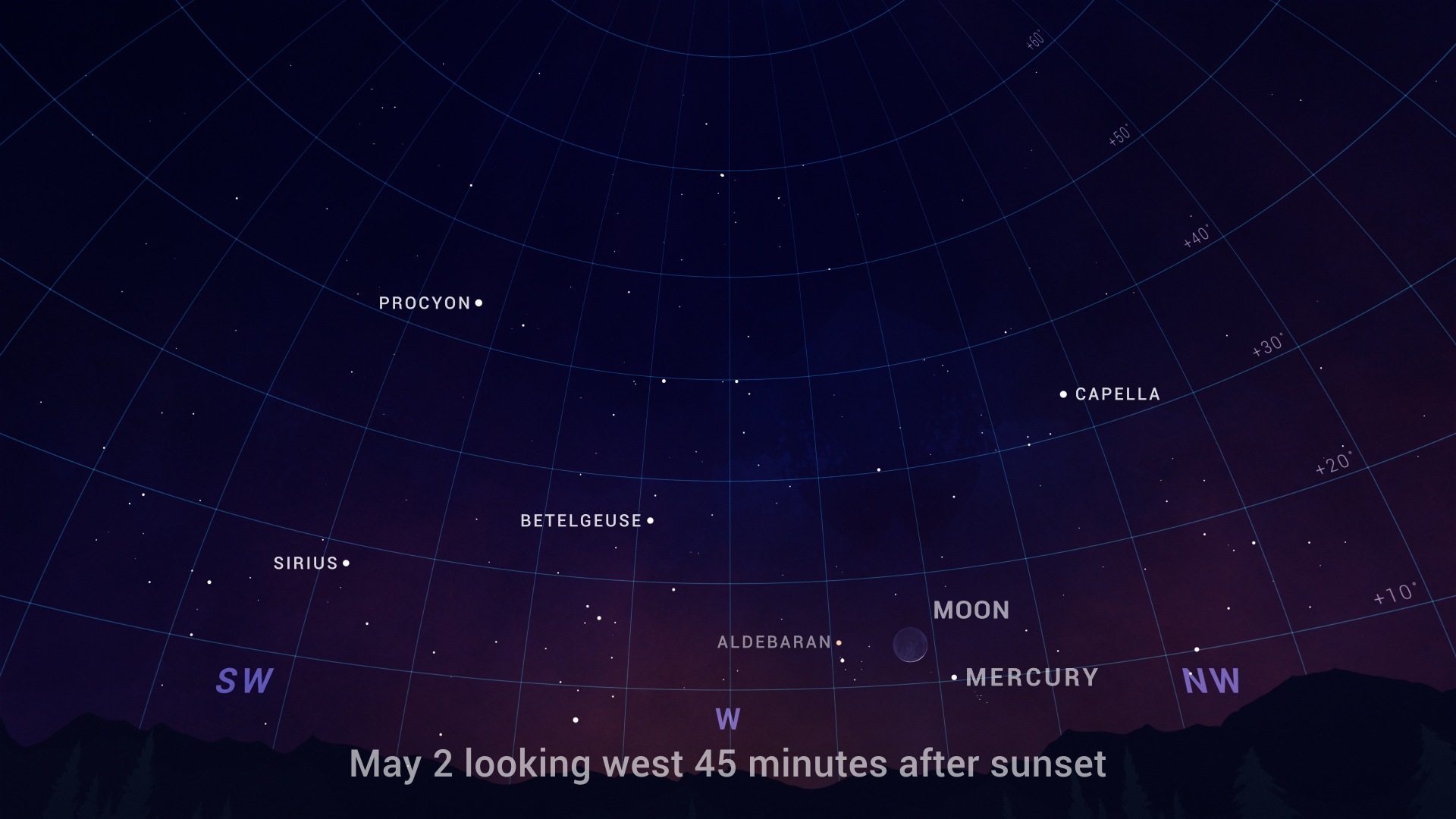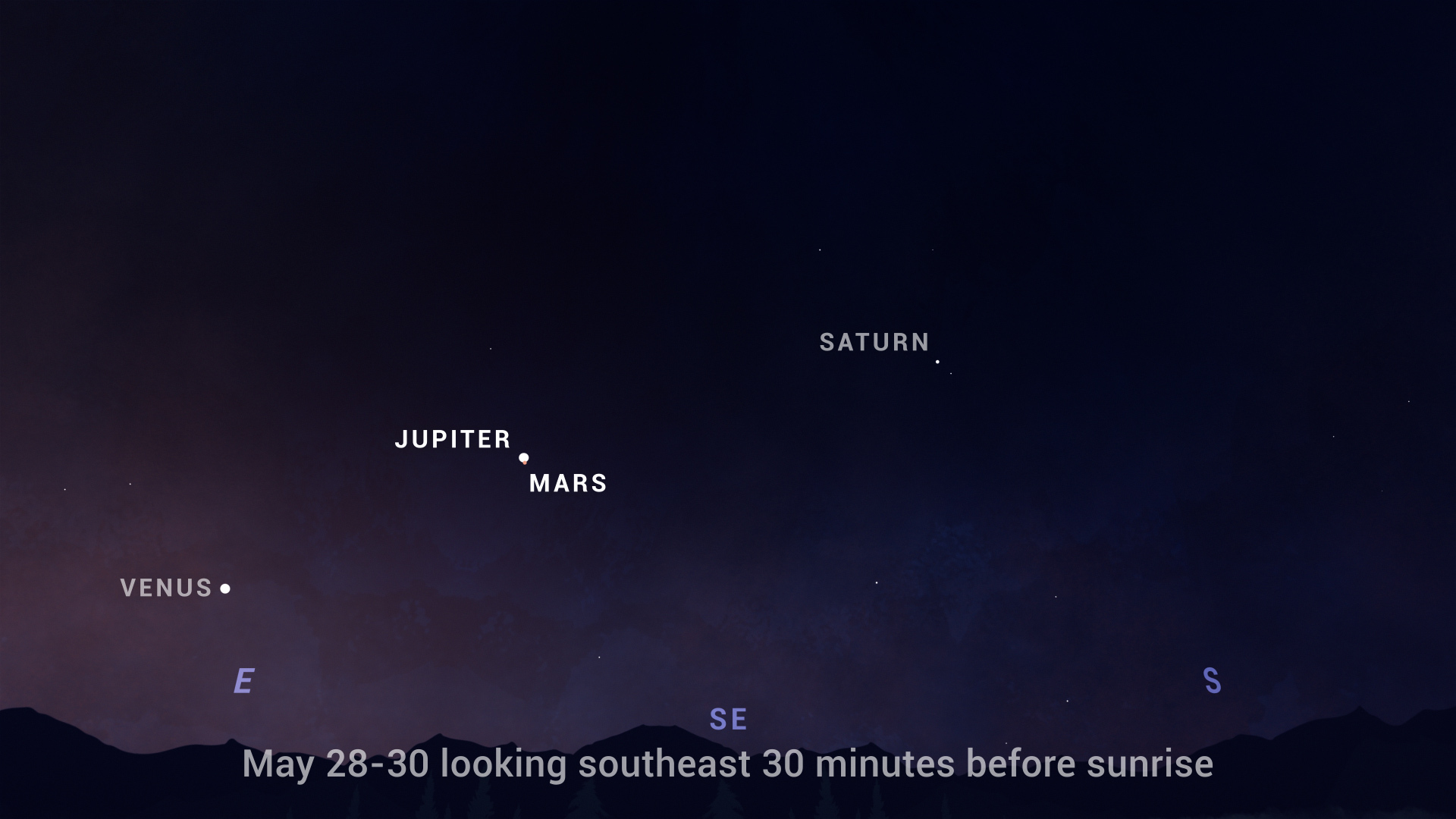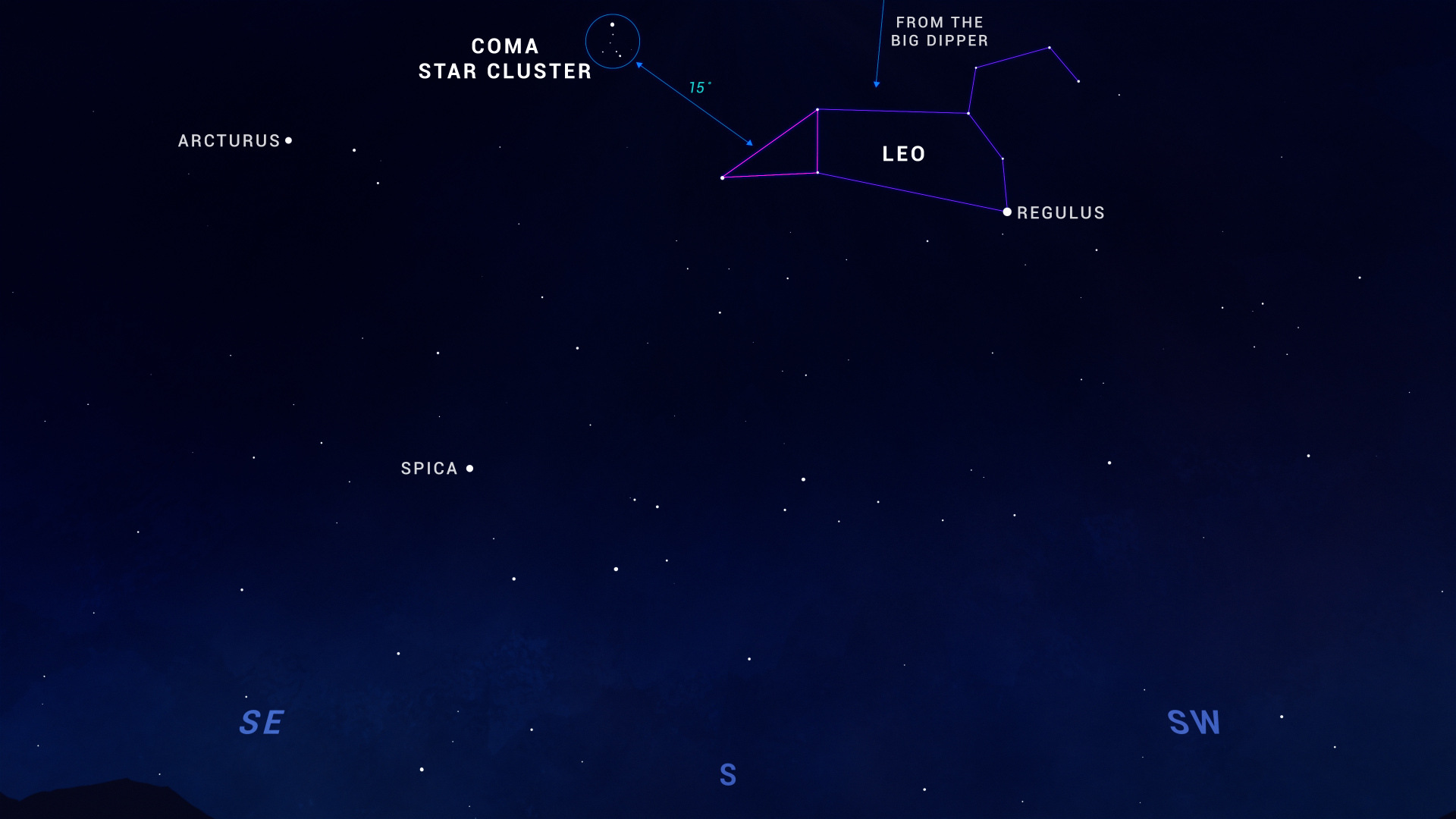What’s Up: May 2022
| Credit | Credit: NASA/JPL-Caltech |
|---|---|
| Historical Date | April 29, 2022 |
| Language |
|
What's Up for May? The planets of dusk and dawn, a lunar eclipse, and the Coma star cluster.

May begins and ends with a couple of great planet-spotting opportunities. On May 2nd, look to the west about 45 minutes after sunset to find Mercury about 10 degrees off the horizon, accompanied by a slim crescent moon. Just to the south of the Moon is brilliant red giant star Aldebaran, which should be roughly the same brightness as Mercury. (And by the way, this is the only chance to spot a naked-eye planet in the early evening until August.)

Then in the last week of May, you can watch each morning as Jupiter and Mars get increasingly close in the predawn sky. Their morning meetup culminates in a close conjunction that you can watch on the 28th through the 30th, where they'll be separated by barely the width of the full moon. Should look incredible with binoculars, where you can also see Jupiter's largest moons.
Skywatchers in the Western Hemisphere can look forward to a total lunar eclipse in mid-May. The event will be visible across the Americas, Europe, and Africa – basically anywhere the Moon is above the horizon at the time.

The visible part of the eclipse begins about 10:30 p.m. U.S. Eastern time on May 15th, with totality starting an hour later and lasting for about an hour and a half. Those in the Eastern U.S. will see the eclipse start with the Moon well above the horizon. For the Central U.S., the eclipse starts about an hour and a half after dark, with the Moon relatively low in the sky. On the West coast of the U.S., the Moon rises with totality beginning or already underway, so you'll want to find a clear view toward the southeast if viewing from there.
Now, lunar eclipses are the ones that are safe to look at directly with your eyes, binoculars, or a telescope (unlike solar eclipses).
The Moon takes on a dim, reddish hue during the period of totality. Even though the Moon is fully immersed in Earth's shadow at that time, red wavelengths of sunlight filter through Earth's atmosphere and fall onto the Moon's surface. One way to think of this is that a total lunar eclipse shows us a projection of all the sunrises and sunsets happening on the planet at that moment.
So check your local details for this eclipse, and find lots more eclipse info from NASA at this link.
Finally in May, a really nice target for binoculars: the Coma star cluster. This loose, open star cluster displays 40 or 50 stars spread over a region of sky about three finger-widths wide. The brightest stars in the cluster form a distinctive Y shape, as seen here.

The Coma star cluster is located about 300 light-years away, making it the second-closest open cluster to Earth after the Hyades cluster in Taurus.
To find the Coma star cluster, look southward for the constellation Leo. It can be easiest to start from the Big Dipper, toward the north, and use the two "pointer stars" on the end which always point you toward Leo. Once you've identified Leo, the Coma star cluster is about 15 degrees to the east of the triangle of stars representing the lion's hindquarters. It's relatively easy to find with binoculars, even under light-polluted urban skies – as long as it's clear out.
So here's wishing you clear skies for finding the Coma star cluster and any other wonders you discover in the night sky in May.
Stay up to date with all of NASA's missions to explore the solar system and beyond at nasa.gov. I'm Preston Dyches from NASA's Jet Propulsion Laboratory, and that's What's Up for this month.
